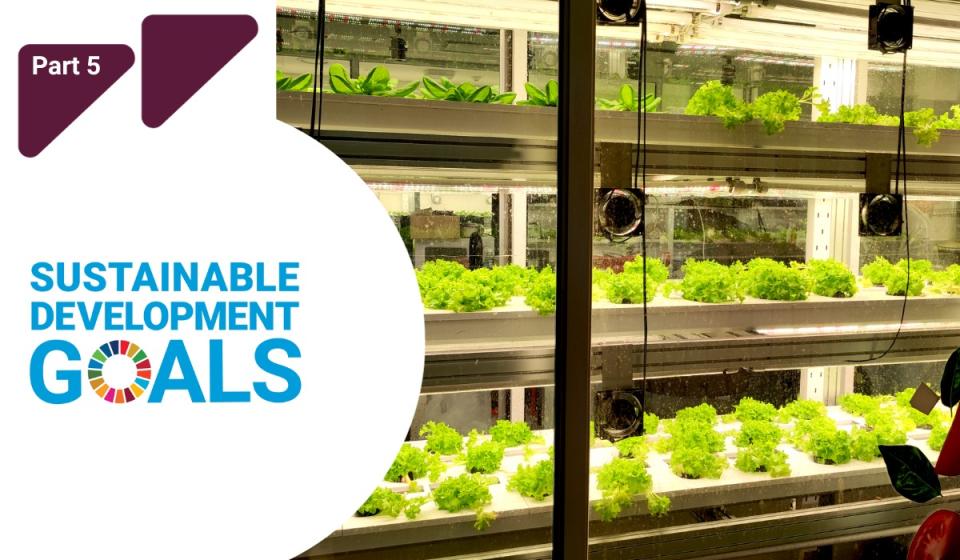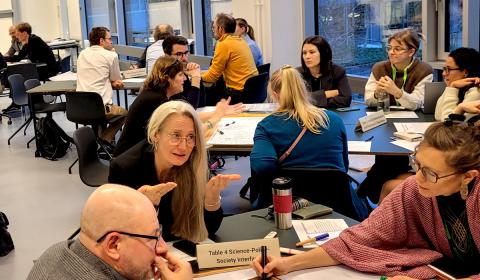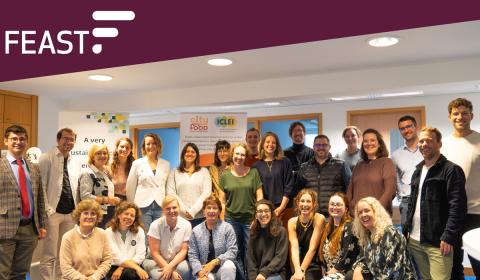
Image source: Brigitte Braun - os4os
In our previous post, we explored the limitations of education and awareness campaigns in addressing food security and sustainability. Now, in "The SDGs and the Failure of Technological Solutions," we delve into the belief that technology alone can solve these challenges. By examining the drawbacks of relying solely on technological advancements, we aim to foster a critical analysis of the ways in which technology has failed to fully address food insecurity and sustainability, often perpetuating power imbalances and exploitative practices.
Advances in technology have long been touted as the solution to many of the world's problems, including those related to food security and sustainability1. From precision agriculture to vertical farming, these technological advancements have the potential to increase food production while minimizing negative environmental impacts2. However, as we look closer at these solutions, it becomes clear that they are not the panacea they were once thought to be. In this blog post, we will explore the limitations of technology in addressing food insecurity and sustainability and offer a critical analysis of the ways in which it has failed to live up to its promise.
One of the main limitations of technology in addressing food insecurity and sustainability is that it is often developed and implemented without considering the specific needs of the communities it is intended to serve3. Precision agriculture, for example, relies heavily on data and technology, but in many rural communities, access to such technology is limited or non-existent. As a result, these communities are often left behind in the race to increase food production through technology.
Additionally, technology can create an over-reliance on inputs such as fertilizers and pesticides, which can have negative environmental impacts. Vertical farming, for some crops, uses significantly more energy and water than traditional farming methods, and the use of chemicals and artificial lighting can also have negative effects on the environment4.
Furthermore, there is also the issue of food sovereignty, which is the right of people to determine their own food systems5. Technology often threatens local food systems and the food sovereignty of people by allowing large corporations to control food production and distribution systems and access to food. The liberalization of trade and speculation in the food industry, which is often driven by technology, creates serious distortions in food production and distribution systems, which in turn can undermine food sovereignty6.
While technology has the potential to play a significant role in addressing food insecurity and sustainability, it is important to approach its implementation with a critical eye. We must ensure that technology is developed and implemented in a way that is inclusive and takes into account the specific needs of communities. We must also consider the potential negative environmental impacts and the threat that technology poses to food sovereignty. Only by doing so can we truly harness the potential of technology to create a more sustainable and equitable food system.
To achieve sustainable and resilient food systems, it is crucial to consider social, cultural, and economic factors alongside technological advancements. Technology should be viewed as a tool that complements a broader approach rather than a standalone solution. By incorporating local knowledge, community participation, and traditional practices, we can ensure the suitability and effectiveness of technological solutions in addressing food insecurity and sustainability.
To summarize, the belief that technology alone can solve the challenges of food security and sustainability is flawed. While technology has its merits, it also comes with limitations and potential drawbacks. A balanced approach that combines appropriate technology with social and systemic changes is necessary to achieve sustainable food systems. By considering the specific needs of communities, addressing environmental impacts, and safeguarding food sovereignty, we can pave the way for a more inclusive, resilient, and equitable future in the realm of food security and sustainability.
In conclusion, the five-blog post series sheds light on various aspects of the Sustainable Development Goals (SDGs) and emphasizes the need for holistic and equitable solutions, inclusive decision-making processes, and the recognition of the complex socio-economic and environmental factors that underpin food security and sustainability. By addressing these gaps and challenges, we can work towards achieving a more sustainable and resilient future that prioritizes the well-being of people and the planet.
References
1 Dorin, A., Penn, A. S., & Siqueiros, J. M. (2022, July). AgTech that doesn’t cost the Earth: Creating sustainable, ethical and effective agricultural technology that enhances its social and ecological contexts. In ALIFE 2022: The 2022 Conference on Artificial Life. MIT Press.
2 Karanisa, T., Achour, Y., Ouammi, A., & Sayadi, S. (2022). Smart greenhouses as the path towards precision agriculture in the food-energy and water nexus: Case study of Qatar. Environment Systems and Decisions, 42(4), 521-546.
3 Müller, B., Hoffmann, F., Heckelei, T., Müller, C., Hertel, T. W., Polhill, J. G., ... & Webber, H. (2020). Modelling food security: Bridging the gap between the micro and the macro scale. Global Environmental Change, 63, 102085.
4 Moghimi, F. (2021). Vertical farming economics in 10 minutes. Rutgers Business Review, 6(1), 122-131.
5 Trauger, A. (2015). Putting food sovereignty in place. In Food Sovereignty in International Context (pp. 1-12). Routledge.
6 Canfield, M., Anderson, M. D., & McMichael, P. (2021). UN Food Systems Summit 2021: Dismantling democracy and resetting corporate control of food systems. Frontiers in Sustainable Food Systems, 5, 661552.


